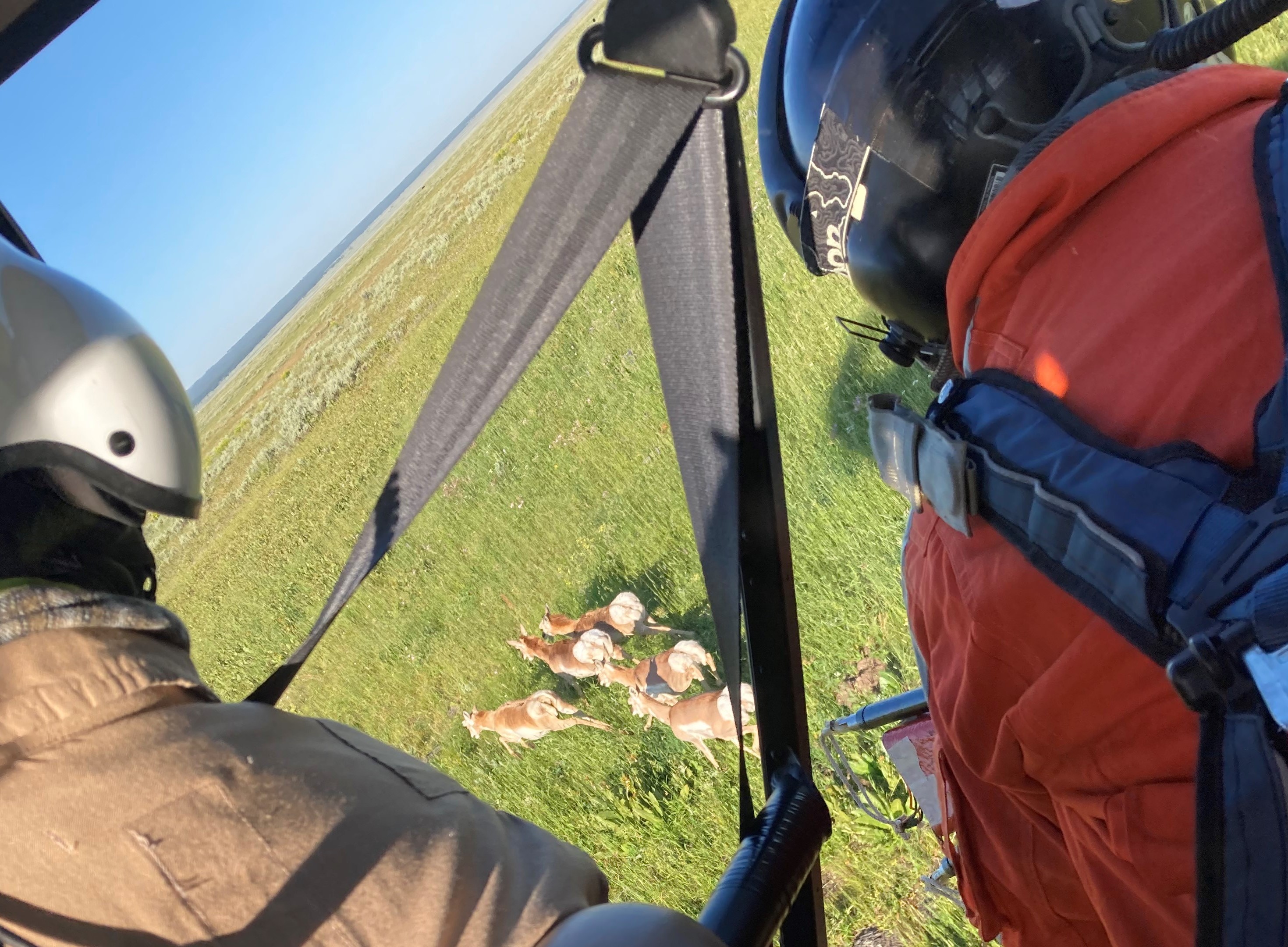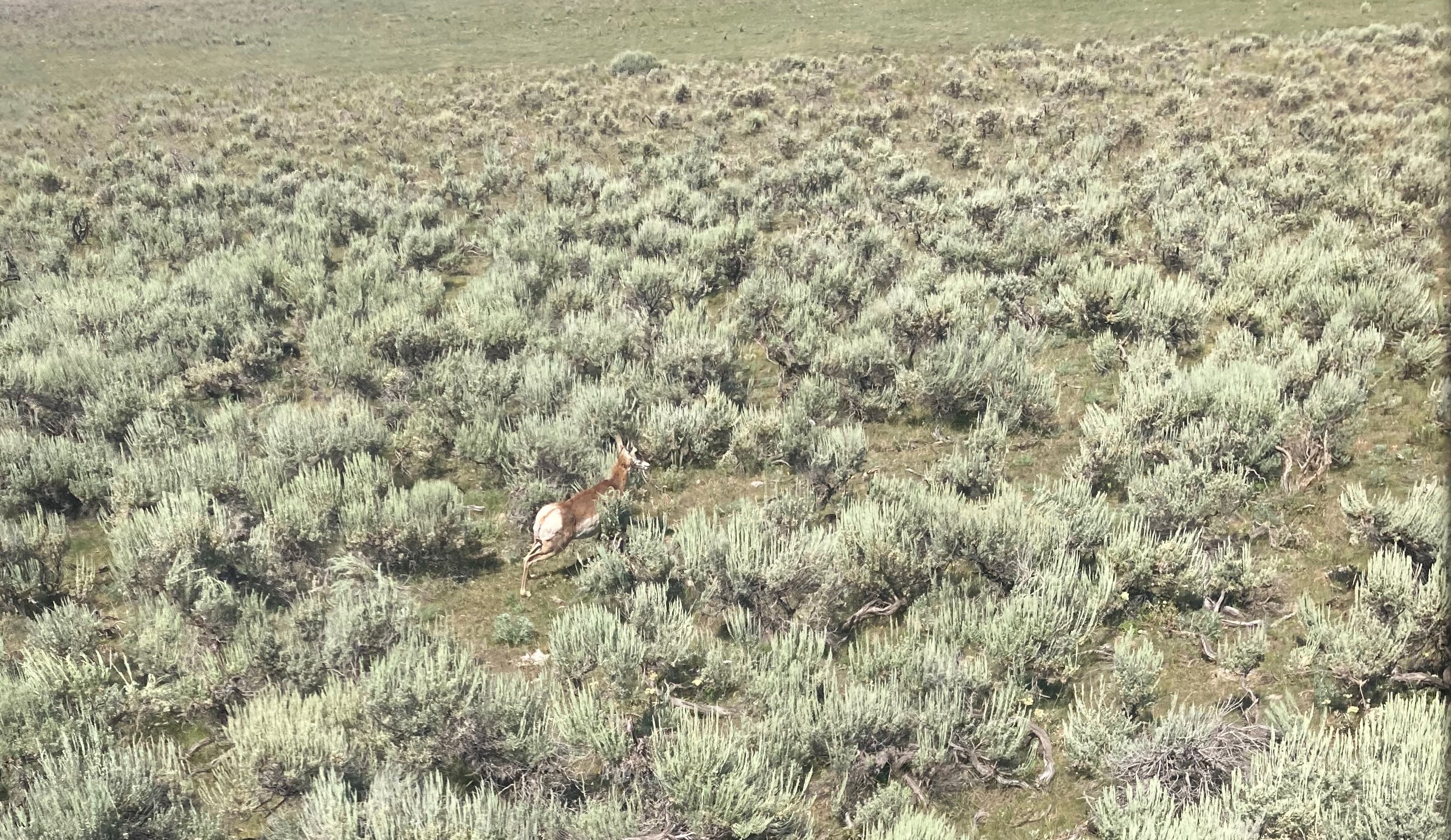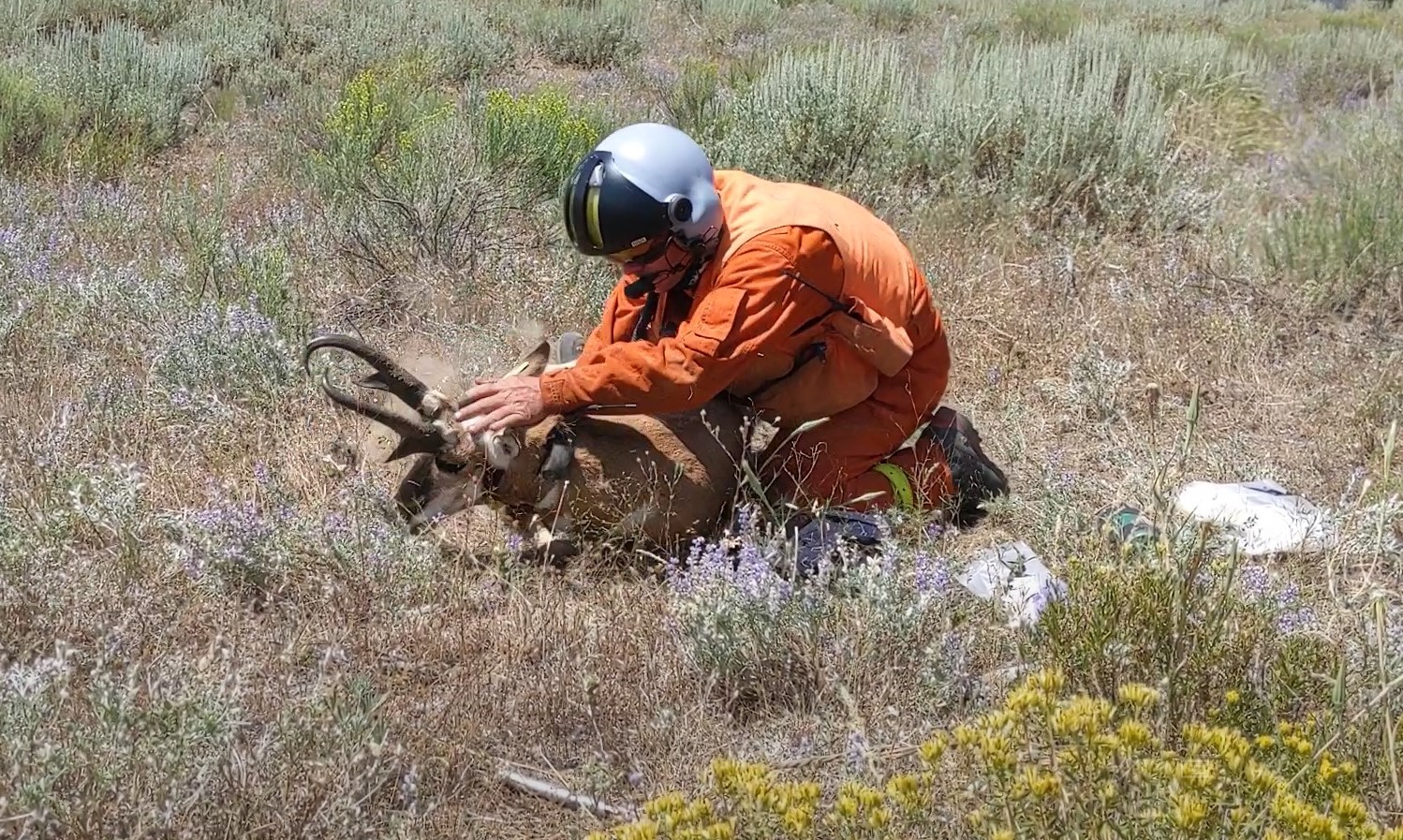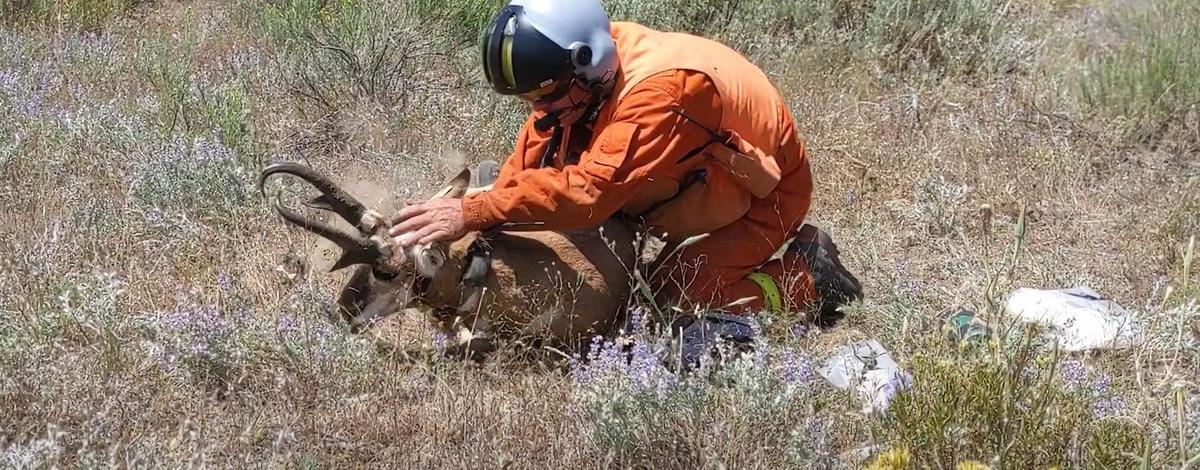Fish and Game Wildlife Biologists took to the air in late July to capture pronghorn antelope as part of a statewide effort to improve the understanding of pronghorn migration routes and habitat use. In all, 106 pronghorn were outfitted with GPS tracking collars across 27 Game Management Units. Thirty one of those collars were placed on pronghorn in the Upper Snake Region. While the Department has collared thousands of deer and elk over the years, there is still opportunity to learn more about how pronghorn are using the landscape, particularly in relation to their movements between seasonal ranges.

In some areas pronghorn travel long distances between summer and winter habitat. This seasonal movement allows pronghorn to get the best of both worlds, seeking out good summer forage and avoiding the worst winter conditions. Maintaining healthy and productive pronghorn herds is largely dependent on understanding and managing the whole breadth of their seasonal ranges and the challenges they meet along the way. The quality of habitat on both their summer and winter ranges in conjunction with the ability for animals to move between the two, are crucial factors determining their long-term survival.
Fish and Game has begun implementing several new research projects across the state focused on expanding their understanding of big game winter range and migration routes. Five priority project areas were identified for study: Boise Complex, Panhandle Complex, Rocky Point, Big Desert and Ashton to Montana.

Two of the study areas, Big Desert and Ashton to Montana, are located in the Upper Snake Region and contain pronghorn with migration patterns that vary a great deal. "A portion of the pronghorn wintering between Ashton and the Madison Valley in Montana will travel southeast to spend the summer at Henry’s Lake Flats, crossings US20 and SH87 along the way," says Wildlife Biologist Morgan Pfander. "Other herds move eastward from winter range on the Big Desert to spend their summers in the Shotgun Valley or Harriman State Park."
Prompted by two tragic events this past winter in which 96 pronghorn antelope were killed by train collisions in Jefferson County, the Idaho Chapter of Safari Club International (SCI) received a Fish and Game Commission Community Challenge Grant to further aid this pronghorn research. The additional grant funding sought by SCI contributed an additional 12 pronghorn tracking collars for use in the Upper Snake Region.
Information collected from these collars will be used to identify migration barriers and important habitats used along the pronghorns’ migratory routes. Understanding these migration patterns will help wildlife managers focus restoration and mitigation efforts to decrease wildlife mortality, enhance big game populations and increase hunting opportunities in Idaho.


